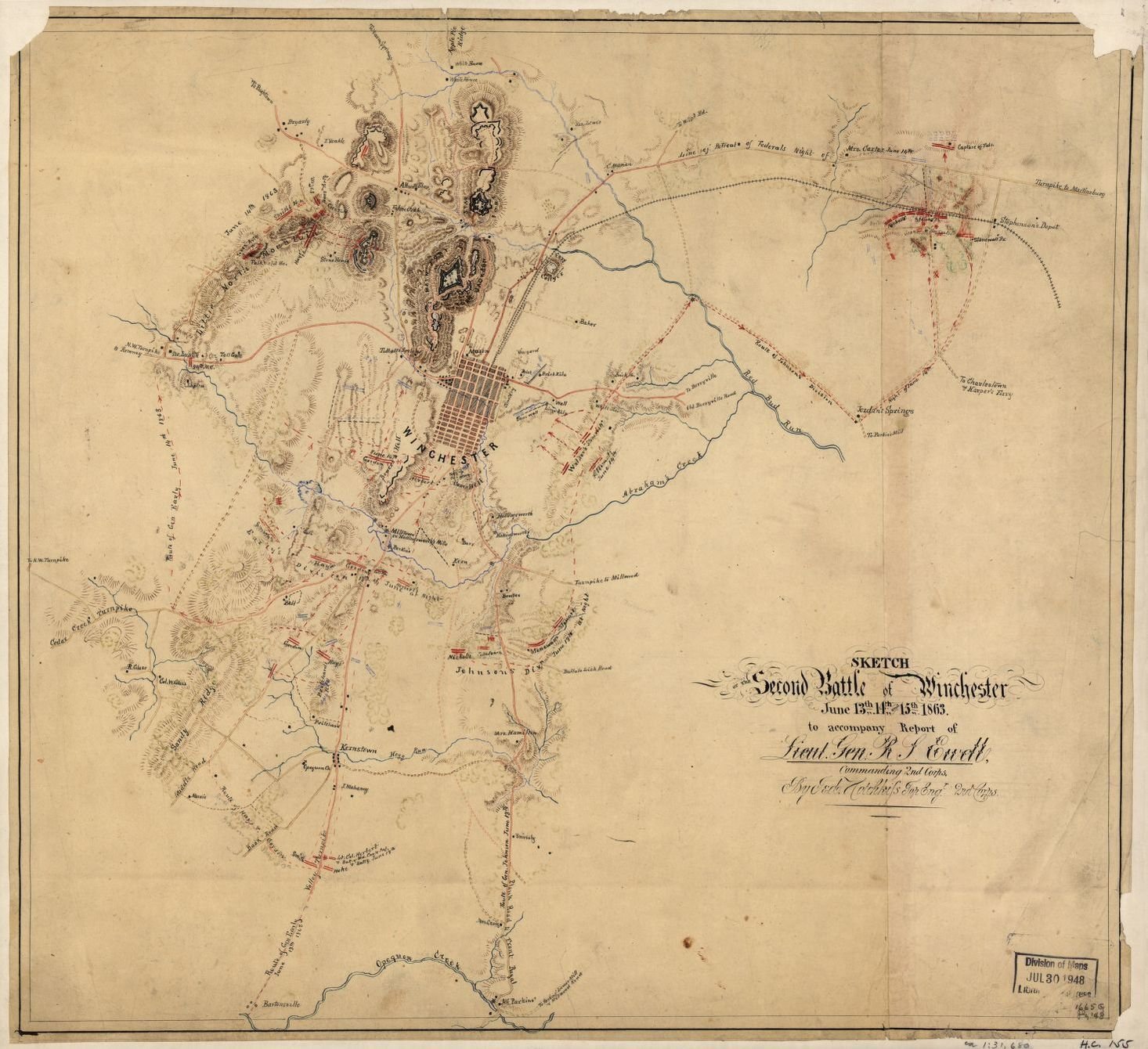
The Second Battle of Winchester
June 13-15, 1863
“Hurrah for the Louisiana boys! There’s Early; I hope the old fellow won’t be hurt!”
The Second Battle of Winchester was a stunning Confederate victory which cleared the Valley of Federal troops and opened the door for Lee's second invasion of the North that led to the Battle of Gettysburg. The battle also demonstrated a rare use of extensive earthworks in the Shenandoah Valley.
After the Battle of Brandy Station, June 9, 1863, Confederate Gen. Robert E. Lee ordered his II Corps, Army of Northern Virginia, under Gen. Ewell, to clear the northern Shenandoah Valley of Federal opposition. Ewell’s columns converged on Winchester’s garrison commanded by Gen. Milroy. Instead of retreating in the face of superior numbers, Milroy determined to make a stand in the supposedly strong fortifications west and north of town. There was fighting on the afternoon of June 13, but the next day the Confederate Louisiana Brigade captured the West Fort leaving Milroy in an untenable position. After dark, Milroy abandoned his remaining entrenchments in an attempt to retreat to Charles Town. Confederate Gen. Edward “Allegheny” Johnson’s division marched at night and before daylight of the 15th cut off Milroy’s retreat just north of Winchester at Stephenson’s Depot and after intense and chaotic fighting, the Confederates captured approximately 2,400 Federals.





